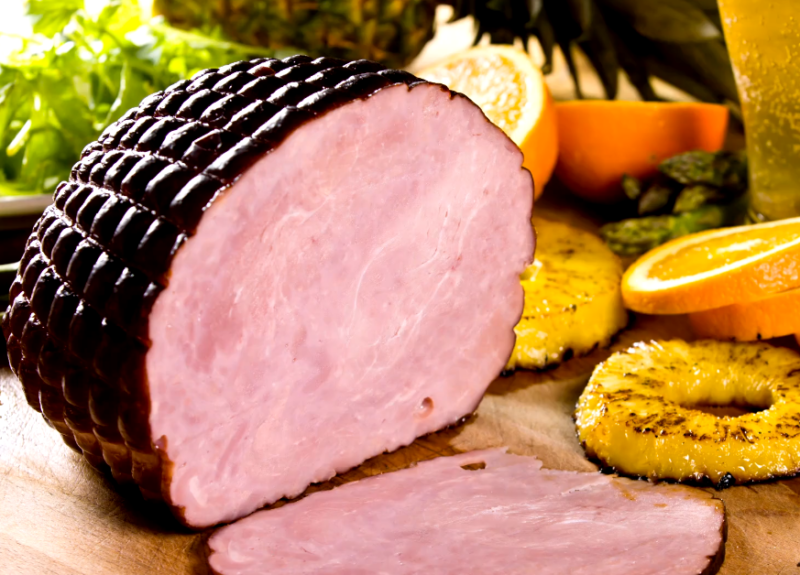Ham brining is a popular technique used to enhance the flavor, tenderness, and moisture of ham. By immersing the ham in a brine solution, the meat undergoes a process of osmosis, where it absorbs the flavors and moisture of the brine, resulting in a juicier and more flavorful end product.
Key Takeaways:
- Ham brining is a process that enhances the flavor, tenderness, and moisture of ham.
- A typical brine consists of water, salt, sugar, nitrite cure, and other flavorings.
- Important factors to consider include brine strength, sugar level, and nitrite level.
- Kosher salt is a good choice for brining, while non-iodized table salt and sea salt should be avoided.
- Sugar helps balance the saltiness and can be added in various forms like granulated sugar, brown sugar, honey, or maple syrup.
Choosing the Right Ingredients for Ham Brining
The success of your ham brine depends on choosing the right ingredients that will impart the desired flavor and texture. When it comes to creating the perfect brine for your ham, there are a few key factors to consider. From selecting the right salt to determining the ideal sugar level and nitrite cure, each ingredient plays a crucial role in achieving exceptional results.
1. Salt
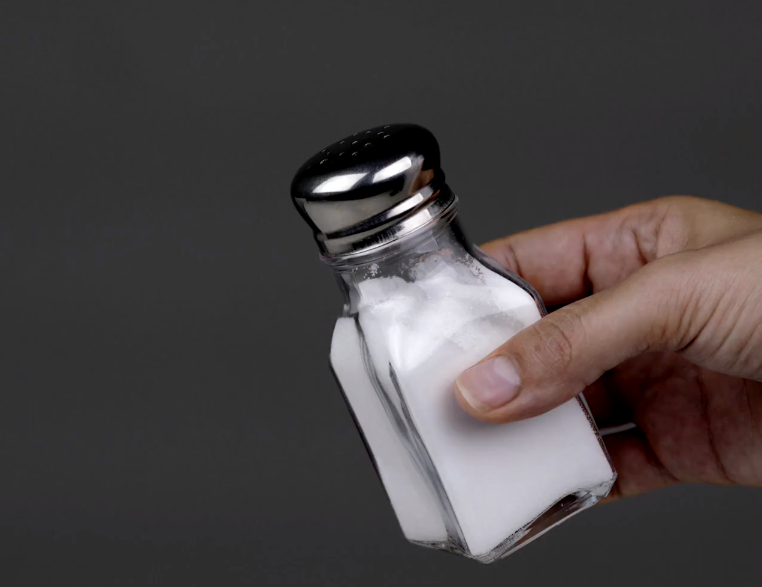
Choosing the right salt is essential for optimal brine flavor and texture. Kosher salt is often recommended for ham brining due to its pure and clean taste. It dissolves easily and evenly, ensuring that every part of the ham receives the benefits of the brine.
Non-iodized table salt and sea salt, on the other hand, may contain impurities that can affect the quality of the brine. To achieve the desired flavor, it is important to use the correct amount of salt based on the size of your ham and your personal taste preferences.
2. Sugar

Sugar is a key ingredient that helps balance the saltiness of the ham and adds a touch of sweetness. Granulated sugar, brown sugar, honey, or maple syrup can all be used to sweeten your brine.
The amount of sugar added can be adjusted based on individual taste preferences. It is important to note that sugar also contributes to the color development of the ham during the cooking process, resulting in a beautifully caramelized exterior.
3. Nitrite Cure
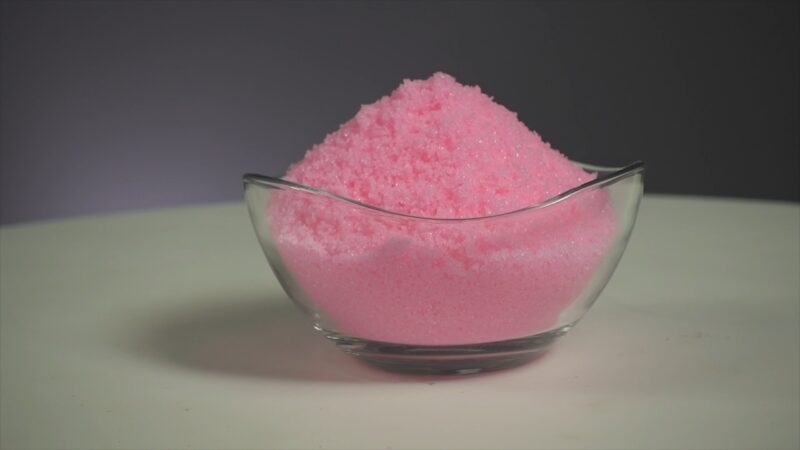
Nitrite curing salt, such as Cure #1, is an essential ingredient in ham brining. It not only enhances the color and flavor of the ham but also helps prevent the growth of harmful bacteria, such as botulism.
The amount of nitrite cure needed depends on the desired nitrite levels and the rate of injection. It is important to follow the recommended guidelines and use the appropriate amount to ensure food safety and achieve the desired results.
By carefully selecting the right ingredients, such as kosher salt, sugar, and nitrite cure, you can create a brine that imparts the perfect balance of flavor and texture to your ham. Additionally, don’t be afraid to experiment with other flavorings, such as pickling spice, allspice berries, or juniper berries, to customize your brine and create a unique taste experience. Remember, adjusting the salt, sugar, and nitrite levels in your recipe can help you create a ham brine that complements your personal preferences and yields exceptional results.
| Ingredient | Recommended Types |
|---|---|
| Salt | Kosher salt |
| Sugar | Granulated sugar, brown sugar, honey, or maple syrup |
| Nitrite Cure | Cure #1 or other recommended nitrite curing salts |
Salt: The Foundation of Ham Brining
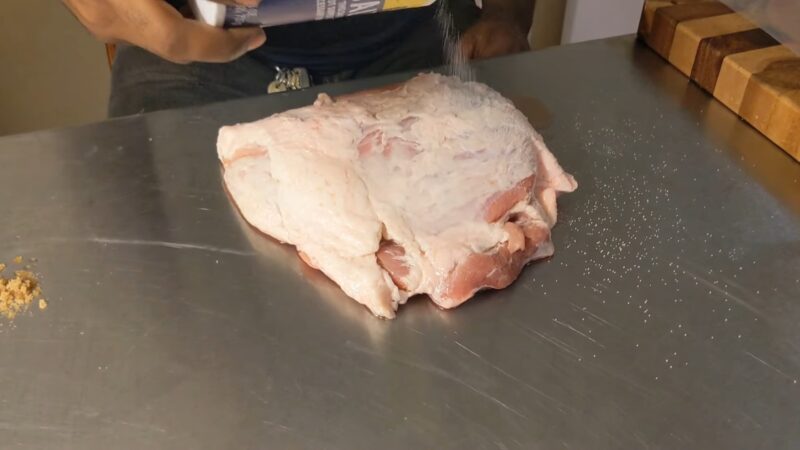
Salt is the cornerstone of ham brining, providing both flavor and texture enhancement. When it comes to selecting the right salt for your brine, it’s important to choose wisely. Kosher salt is a popular choice among chefs and home cooks alike due to its pure taste and lack of additives. Its coarse texture also makes it easier to control and measure.
To ensure optimal flavor absorption, it’s essential to apply the salt correctly. One technique is dry salting, which involves rubbing the ham with salt and allowing it to sit for a period of time. This draws out moisture, intensifies flavor, and tenderizes the meat. Another method is wet brining, where the ham is submerged in a saltwater solution. This method allows the salt to penetrate deeper into the meat, resulting in a more evenly seasoned ham.
Adjusting Salt Level
Everyone’s taste preferences are unique, so it’s important to have control over the saltiness of your brine. If you find a recipe too salty, you can reduce the amount of salt used. Conversely, if you prefer a saltier flavor, you can increase the salt levels. Remember that the brine strength can also affect the overall saltiness, so adjusting the salt levels based on personal taste is essential to achieving the desired outcome.
| Type of Salt | Brine Strength | Recommended Usage |
|---|---|---|
| Kosher Salt | Moderate | Use as the primary salt for brining |
| Sea Salt | Strong | Use in smaller quantities or combine with kosher salt |
| Table Salt (iodized) | Avoid | Highly concentrated and may alter flavor |
Experimenting with different types and amounts of salt can help you find the perfect balance that suits your taste buds. While salt is the foundation of ham brining, it’s just one component among others that contribute to a flavorful and succulent ham.
The Sweet Balance: Adding Sugar to Your Brine
Achieving the ideal balance of sweetness in your ham brine is crucial for a well-rounded flavor profile. Sugar not only helps to counterbalance the saltiness of the brine but also contributes to the overall tenderness and moisture of the ham. When it comes to selecting the right sweetener, there are several options to consider.
Granulated sugar: This is the most common type of sugar used in ham brining. It dissolves easily and provides a clean, neutral sweetness that pairs well with various flavorings. When using granulated sugar, it’s important to ensure that it is completely dissolved in the brine to avoid any graininess in the final product.
Brown sugar: Adding brown sugar to your brine adds a rich, caramel-like flavor and a hint of molasses. It enhances the depth and complexity of the ham’s taste, providing a slightly more robust sweetness compared to granulated sugar. Keep in mind that brown sugar may contribute to a darker color of the ham due to its molasses content.
Honey and maple syrup: For those who crave a touch of natural sweetness, honey and maple syrup are excellent options. These sweeteners impart their distinct flavors, with honey lending a floral and fruity taste, while maple syrup adds a delightful maple essence. Experiment with different varieties and grades to find the one that best complements your ham.
Guidelines for Sugar Levels
When it comes to determining the amount of sugar to use in your brine, it’s a matter of personal preference. However, a general guideline is to use approximately 1 cup of sugar per gallon of water in the brine mixture. This can be adjusted based on the desired level of sweetness and the size of the ham.
Remember to dissolve the sugar completely in warm water before adding it to the brine, as this helps ensure even distribution. It’s also worth noting that the sugar levels in the brine can be modified to suit your taste by increasing or decreasing the amount used. By experimenting with different sugar levels and types, you can customize your brine to create a ham that is perfectly sweetened to your liking.
| Sweetener | Flavor Profile | Recommended Amount |
|---|---|---|
| Granulated Sugar | Neutral, clean sweetness | Approximately 1 cup per gallon of water |
| Brown Sugar | Rich, caramel-like flavor with a hint of molasses | Approximately 1 cup per gallon of water |
| Honey | Floral and fruity sweetness | Approximately 1 cup per gallon of water |
| Maple Syrup | Distinct maple essence | Approximately 1 cup per gallon of water |
The Importance of Nitrite Cure
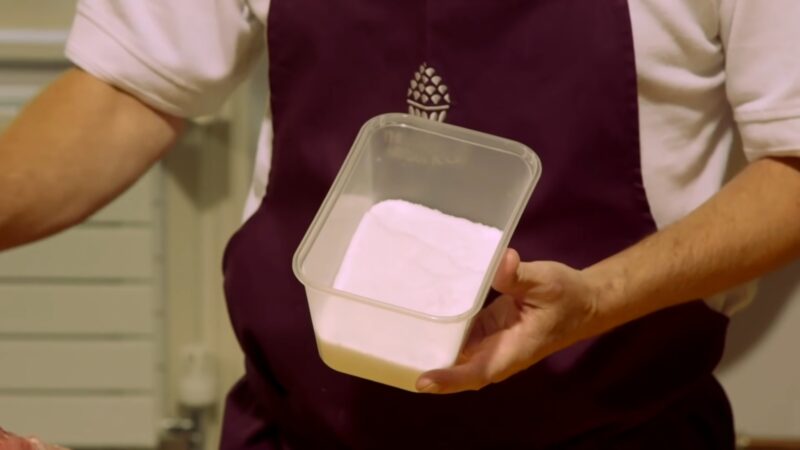
Nitrite cure is an integral component of ham brining, providing both safety and flavor benefits. When used in the brine, nitrite-curing salt, such as Cure #1, not only helps prevent the growth of harmful bacteria like Clostridium botulinum, but also enhances the color and flavor of the ham. It acts as a natural preservative, prolonging the shelf life of the cured meat.
One of the key benefits of nitrite cure is its ability to inhibit the growth of botulism spores, which can be present in raw ham. Botulism is a serious foodborne illness that can cause paralysis and even death. By including nitrite-curing salt in the brine, you can ensure that your ham is safe to consume, giving you peace of mind when serving it to your family and friends.
In addition to its safety benefits, nitrite cure also contributes to the characteristic flavor and appearance of cured ham. Nitrite reacts with proteins in the meat to form nitric oxide, which gives the ham its appealing pink color. It also enhances the aroma and taste, resulting in a more flavorful and appetizing final product.
| Benefits of Nitrite Cure in Ham Brining: |
|---|
| Inhibits growth of botulism bacteria |
| Preserves color and flavor |
| Extends shelf life |
When using nitrite-curing salt, it is important to carefully measure and control the amount used. The appropriate nitrite levels will depend on the desired depth of curing and the rate of injection. It is recommended to follow a trusted recipe or consult a reliable source to ensure the correct usage of nitrite-curing salt.
By understanding the importance of nitrite cure in ham bringing, you can confidently incorporate it into your recipe, knowing that it provides both safety and flavor benefits. Remember to handle and store cured ham properly to maintain its quality and enjoy the delectable results of your brining efforts.
Customizing Your Brine with Flavorings
Customizing your brine with additional flavorings allows you to create a unique and personalized ham experience. By experimenting with different spices, herbs, and aromatics, you can elevate the taste profile of your brine and impart a distinct flavor to your ham. Whether you prefer a hint of warmth from pickling spice or a subtle sweetness from allspice berries, the choice of flavorings is entirely up to you.
One popular option for adding flavor to your brine is pickling spice. This blend of spices, including mustard seeds, coriander seeds, and bay leaves, adds complexity and depth to the brine. Simply place the pickling spice in a spice bag or cheesecloth before adding it to the brine mixture. The amount of pickling spice can be adjusted to achieve your desired level of flavor.
If you’re looking for a warm and slightly sweet note, consider adding allspice berries to your brine. These small, dried berries have a flavor reminiscent of cloves, cinnamon, and nutmeg. By crushing the berries before adding them to the brine, you can release their aromatic oils and infuse your ham with a delightful spiced flavor.
Adjusting Salt, Sugar, and Nitrite Levels
When customizing your brine, it’s important to remember that the salt, sugar, and nitrite levels can be adjusted to suit your personal taste preferences. If you prefer a less salty ham, you can reduce the amount of salt in the brine. Similarly, if you prefer a sweeter ham, you can increase the sugar content.
For those concerned about nitrite levels, it’s important to note that nitrite-curing salt, such as Cure #1, is crucial for preventing botulism and enhancing the color and flavor of the ham. However, the amount of cure needed can be adjusted based on the desired nitrite levels and the rate of injection. It is recommended to follow a trusted recipe or consult with a professional to ensure safe and effective curing.
By understanding these factors and experimenting with different flavorings, you can create a ham brine that perfectly suits your taste preferences. Whether you prefer a classic brine with pickling spice or a unique blend with allspice berries, customizing your brine allows you to take your ham to the next level of deliciousness.
Injecting Brine and Soaking the Ham
Properly injecting brine and soaking the ham are essential steps in the ham brining process. These techniques ensure that the flavors penetrate deep into the meat, resulting in a juicier and more flavorful ham. Let’s explore the step-by-step guide to achieve optimal results.
Step 1: Preparing the Brine
- First, ensure that your brine is properly mixed and chilled to the desired temperature.
- Using a meat injector, carefully insert the needle into the thickest parts of the ham, avoiding any bones.
- Squeeze the plunger to inject the brine slowly, allowing the liquid to disperse evenly throughout the meat.
Step 2: Soaking the Ham
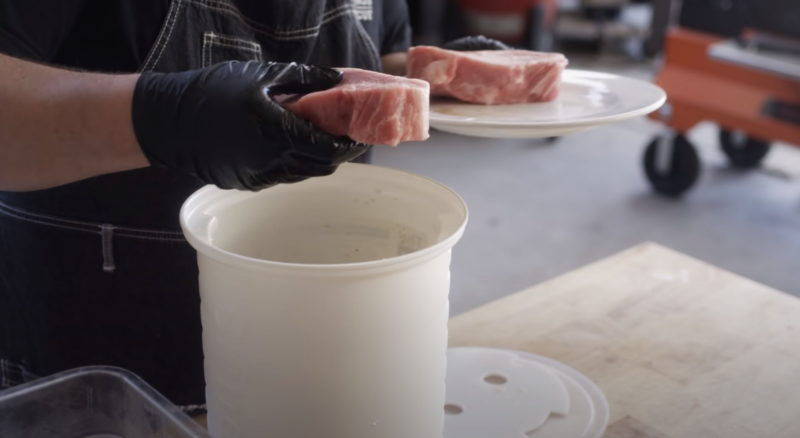
Once the ham has been injected with brine, it’s time to soak it to allow the flavors to penetrate further. Follow these steps:
- Place the ham in a large container or brining bag, ensuring that it is fully submerged in the brine.
- For optimal results, refrigerate the ham during the soaking process. The recommended brining time is approximately 1 hour per pound of meat.
- After the soaking time has elapsed, remove the ham from the brine and rinse it thoroughly to remove any excess saltiness.
By properly injecting brine and soaking the ham, you’ll infuse it with delicious flavors that will delight your taste buds. These steps are essential to achieve a moist and flavorful ham that will be a highlight of your meal.
| Brining Tips: |
|---|
| Don’t rush the process: Take the time to inject the brine evenly and soak the ham for the recommended duration. This will ensure that the flavors are evenly distributed and absorbed by the meat. |
| Use a meat injector: Investing in a good quality meat injector will make the brining process much easier and more efficient. Look for one with a sturdy needle that can penetrate the meat without causing any damage. |
| Keep it chilled: Refrigerate the ham during the soaking process to prevent bacterial growth and maintain food safety. It’s important to keep the ham at a safe temperature throughout the brining process. |
Adjusting Your Brine Recipe
Don’t be afraid to tweak your brine recipe to create a ham that matches your exact flavor preferences. Adjusting the salt, sugar, and nitrite levels in your brine can make a significant difference in the taste and overall quality of your ham. Whether you prefer a more savory or sweet profile, experimentation with these key ingredients allows you to tailor the brine to your personal liking.
When it comes to salt, finding the right balance is crucial. Too little salt can result in a bland ham, while too much can make it overpowering. Start with a recommended salt level based on your chosen recipe, and then adjust gradually to achieve your desired taste. Keep in mind that different types of salt have varying levels of salinity, so be mindful of the type you choose and make adjustments accordingly.
The sweetness in your ham can be customized by adjusting the sugar levels in your brine. Whether you opt for granulated sugar, brown sugar, honey, or maple syrup, each sweetener brings its own distinct flavor to the table. Start with the recommended sugar amount in your recipe and add more or less depending on how sweet you prefer your ham to be.
When it comes to nitrite cure, it’s essential to follow guidelines for food safety. The amount of cure needed depends on the desired nitrite levels and the rate of injection. Always refer to a trusted recipe or consult an expert to ensure you’re using the appropriate amount. Nitrite cure not only helps prevent botulism but also enhances the color and flavor of the ham, so it’s an essential ingredient to consider.
Remember, the beauty of brining is the ability to customize and experiment. Feel free to add other flavorings to your brine, such as pickling spice, allspice berries, or juniper berries, to create a unique flavor profile for your ham. By understanding the key factors involved in brine adjustment, you can confidently create your own customized brine recipe that will result in a ham that is perfectly suited to your taste.
| Ingredient | Recommended Amount | Adjustment |
|---|---|---|
| Salt | Based on recipe | Add or reduce based on taste |
| Sugar | Based on recipe | Increase or decrease for desired sweetness |
| Nitrite Cure | Based on desired nitrite levels and injection rate | Consult recipe or expert for guidance |
| Other Flavorings | Based on personal preference | Add as desired |
FAQ
What are the key ingredients for ham brining?
The key ingredients for ham brining include water, salt, sugar, nitrite cure, and optional flavorings such as pickling spice, allspice berries, and juniper berries.
Which type of salt is best for bringing ham?
Kosher salt is a good choice for brining ham, while non-iodized table salt and sea salt should be avoided.
Why is sugar added to the brine?
Sugar helps balance the saltiness in the brine and can be added in the form of granulated sugar, brown sugar, honey, or maple syrup.
Why is nitrite cure important in ham brining?
Nitrite-curing salt, such as Cure #1, is crucial for preventing botulism and enhancing the color and flavor of the ham.
Can I adjust the salt, sugar, and nitrite levels in a brine recipe?
Yes, it is possible to adjust the salt, sugar, and nitrite levels in a brine recipe to suit your individual taste preferences.
How do I inject the brine into the ham?
Injecting the brine into the ham involves using a food injector to distribute the brine evenly throughout the meat.
Final Words
In conclusion, ham brining significantly enhances flavor, tenderness, and moisture. With insights from this guide, mastering the art becomes straightforward.
Key components include using kosher salt, balancing salt with sugars like brown sugar or honey, and understanding the role of nitrite curing salts such as Cure #1. Personal touches, from pickling spices to juniper berries, can further elevate the flavor.
Adjustments in ingredients allow for personalized taste profiles, ensuring every ham is uniquely delightful. With this knowledge, confidently embark on your brining journey and craft an exceptional ham.

